Allegro
The Future of the Repertoire
Volume 114, No. 4April, 2014
PLEASE ALSO READ “NEW WORKS DESERVE SECOND CHANCES” BY WILLIAM BOLCOM
We recently asked our members for their thoughts on performing current repertoire. What you told us was thoughtful, provocative and surprising…
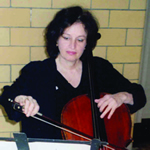 As a performer, I love working on and performing new music. I find it challenging and enjoy getting to know a new work. The major problem is that audiences – in most cases – will only tolerate a new work on a program if they also can hear the tried and true classics. I believe the reason for this is that as performers we get to know a difficult and not easily accessible new work by rehearsing it many times (which is what it usually requires). With repeated hearings, we can understand it as easily as we do Mozart or Mendelssohn. The audience doesn’t have that opportunity, nor are most members of the audience trained musicians with the ability to hear the beauty in a work with a high level of complexity of texture and lots of dissonance. I have several friends who are not musicians but are great music lovers and passionate concert goers with significant knowledge of classical music. For them, even sitting through a late Beethoven quartet is a bit of a struggle and the music of such “modern” masters like Ravel and Stravinsky is like taking bad tasting medicine.
As a performer, I love working on and performing new music. I find it challenging and enjoy getting to know a new work. The major problem is that audiences – in most cases – will only tolerate a new work on a program if they also can hear the tried and true classics. I believe the reason for this is that as performers we get to know a difficult and not easily accessible new work by rehearsing it many times (which is what it usually requires). With repeated hearings, we can understand it as easily as we do Mozart or Mendelssohn. The audience doesn’t have that opportunity, nor are most members of the audience trained musicians with the ability to hear the beauty in a work with a high level of complexity of texture and lots of dissonance. I have several friends who are not musicians but are great music lovers and passionate concert goers with significant knowledge of classical music. For them, even sitting through a late Beethoven quartet is a bit of a struggle and the music of such “modern” masters like Ravel and Stravinsky is like taking bad tasting medicine.
–Amy Camus
 We must support all of the composers who have taken the time to dedicate their careers to writing music. Without them, we become curators of a museum that will eventually have very few visitors. I believe that with the advent of clubs that serve alcohol and cater to contemporary music ensembles, 21st century music has never spoken as clearly and profoundly (in balance with the distillation proportions of the drinks served!) Whatever it takes to develop an audience serves live music well. My criticism of contemporary music? Come on, composers: make the parts so we can read your music! Larger fonts, please – and once in a while, consider the page turns of the parts that your computers are churning out. Also, if I am asked to bow another crotale, tam tam, cymbal or vibraphone, I may have to invest in bow rosin stock. What makes the percussion side of the 21st century so exciting is the constant innovation and invention of new instruments, new techniques and new timbres that come from the advancement of the world of percussion. It is never ending, for us drummers! Lastly, I am fine when composers come to rehearsals, as long as they don’t say very much and they actually composed the piece, as opposed to having their computer write the piece, unless their computer wants to field questions.
We must support all of the composers who have taken the time to dedicate their careers to writing music. Without them, we become curators of a museum that will eventually have very few visitors. I believe that with the advent of clubs that serve alcohol and cater to contemporary music ensembles, 21st century music has never spoken as clearly and profoundly (in balance with the distillation proportions of the drinks served!) Whatever it takes to develop an audience serves live music well. My criticism of contemporary music? Come on, composers: make the parts so we can read your music! Larger fonts, please – and once in a while, consider the page turns of the parts that your computers are churning out. Also, if I am asked to bow another crotale, tam tam, cymbal or vibraphone, I may have to invest in bow rosin stock. What makes the percussion side of the 21st century so exciting is the constant innovation and invention of new instruments, new techniques and new timbres that come from the advancement of the world of percussion. It is never ending, for us drummers! Lastly, I am fine when composers come to rehearsals, as long as they don’t say very much and they actually composed the piece, as opposed to having their computer write the piece, unless their computer wants to field questions.
–Jonathan Haas
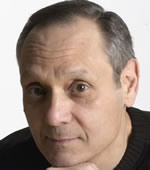 Twenty-first century repertoire is multifarious. So it’s difficult to say what I like about performing it, except that it is always safe to say I enjoy performing good music, well written for my instrument. Musical style and time period are secondary considerations. I particularly enjoy performing good chamber music, which should raise some eyebrows, since I am a double bassist. Over the past 15 years, I’ve had the privilege of directing a chamber music series in New Jersey in which I’ve often performed. At its height for the past several seasons, we performed about 15 concerts a year. On this series, I programmed arranged chamber music (when I played my own arrangements, often of second cello parts) and music originally composed for double bass, including works written for and dedicated to our ensemble. A number of those 21st century works are outstanding and come to mind readily: two piano quintets and a decet for mixed ensemble and voice by Frank Ezra Levy, three string quintets and two piano quintets by Liduino Pitombeira, a string quintet and a piano quintet by Joãn Guilherme Ripper, a string quintet by Samuel Zyman, and a work for soprano and double bass by Paul McIntyre. What these diverse works have in common – something that made them particularly useful to us – is that they are all audience friendly. Gone are the days when “new music” meant idiosyncratic works impossible to approach at first hearing. Frequently the composers were present at the premieres and even at some repeat performances, and audience members were able to speak to them. The compositions I mentioned were uniformly well liked. It was wonderful that most of the composers made a special effort to attend at least our dress rehearsal – especially since two are Brazilians and one is Canadian! We always appreciated hearing their comments about tempi, balance, and interpretation. Fortunately, they are all experienced professionals, so they were able to intuit how best to be helpful to us in working toward a successful performance in the time available. I am particularly proud of having contributed to the expansion of the double bass chamber music repertoire with these excellent 21st century works.
Twenty-first century repertoire is multifarious. So it’s difficult to say what I like about performing it, except that it is always safe to say I enjoy performing good music, well written for my instrument. Musical style and time period are secondary considerations. I particularly enjoy performing good chamber music, which should raise some eyebrows, since I am a double bassist. Over the past 15 years, I’ve had the privilege of directing a chamber music series in New Jersey in which I’ve often performed. At its height for the past several seasons, we performed about 15 concerts a year. On this series, I programmed arranged chamber music (when I played my own arrangements, often of second cello parts) and music originally composed for double bass, including works written for and dedicated to our ensemble. A number of those 21st century works are outstanding and come to mind readily: two piano quintets and a decet for mixed ensemble and voice by Frank Ezra Levy, three string quintets and two piano quintets by Liduino Pitombeira, a string quintet and a piano quintet by Joãn Guilherme Ripper, a string quintet by Samuel Zyman, and a work for soprano and double bass by Paul McIntyre. What these diverse works have in common – something that made them particularly useful to us – is that they are all audience friendly. Gone are the days when “new music” meant idiosyncratic works impossible to approach at first hearing. Frequently the composers were present at the premieres and even at some repeat performances, and audience members were able to speak to them. The compositions I mentioned were uniformly well liked. It was wonderful that most of the composers made a special effort to attend at least our dress rehearsal – especially since two are Brazilians and one is Canadian! We always appreciated hearing their comments about tempi, balance, and interpretation. Fortunately, they are all experienced professionals, so they were able to intuit how best to be helpful to us in working toward a successful performance in the time available. I am particularly proud of having contributed to the expansion of the double bass chamber music repertoire with these excellent 21st century works.
–Anthony Scelba
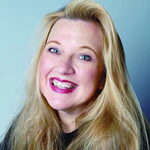 There’s much exciting new music being cranked out in today’s milieu, not all of it avant-garde. I am a rehearsal pianist, as well as an organist and soprano, so I am most often called to rehearse new operas or new musical theatre/hybrid works that are just coming “off press.” If the music is technically unique or challenging, and really represents something new, I thoroughly enjoy myself and appreciate the chance to interact with a live composer who can tell you right then and there what she or he envisions for the piece. I’ve been in situations where I’ve had individual or improvisatory freedom in that re-creation, and other situations where I must adhere specifically to what’s written on the page. Either is fine with me – I see it as a wonderful chance to employ my full range of skills. I once sang a lead in a new opera which rehearsed only with MIDI files before the orchestra was called in at the last rehearsal. The music was complex and exacting, unlike most traditional, familiar opera repertoire, so as a vocalist, I was on my mettle to function just as any other instrument or component would. On another gig, the situation was the exact polar opposite: the composer, who was also a painter, erected a series of some 40 paintings and I was part of a vocal quintet that improvised vocal elements to the designated painting in performance. The paintings were the “sheet music.” There was no notation, only color, shapes and text that the performers could pull and react to, so performances sounded different each and every time. It ended up being a very emotional experience for performers and audience alike, and there was an opportunity to employ much non-standard vocal technique. Again, for me, as long as the music maintains a high technical standard, it is thrilling to perform. I think the music speaking to today’s new music fans and audiences is of the electro-acoustic genre. Technology plays a huge part in music composition now. Purely acoustic music almost is left in the dust behind some of these technically dazzling, aurally “wow-ing” electronic works that stretch the boundaries of sound. There are entire concerts now that consist of only the composer at the computer, running the file. So let’s keep a cheer going for the inclusion of live human musicians. Finally, I enjoy performing my own new music best. I write opera, music theatre, art song, chamber music, choral music and organ music. (I have great rapport with the composer: myself!)
There’s much exciting new music being cranked out in today’s milieu, not all of it avant-garde. I am a rehearsal pianist, as well as an organist and soprano, so I am most often called to rehearse new operas or new musical theatre/hybrid works that are just coming “off press.” If the music is technically unique or challenging, and really represents something new, I thoroughly enjoy myself and appreciate the chance to interact with a live composer who can tell you right then and there what she or he envisions for the piece. I’ve been in situations where I’ve had individual or improvisatory freedom in that re-creation, and other situations where I must adhere specifically to what’s written on the page. Either is fine with me – I see it as a wonderful chance to employ my full range of skills. I once sang a lead in a new opera which rehearsed only with MIDI files before the orchestra was called in at the last rehearsal. The music was complex and exacting, unlike most traditional, familiar opera repertoire, so as a vocalist, I was on my mettle to function just as any other instrument or component would. On another gig, the situation was the exact polar opposite: the composer, who was also a painter, erected a series of some 40 paintings and I was part of a vocal quintet that improvised vocal elements to the designated painting in performance. The paintings were the “sheet music.” There was no notation, only color, shapes and text that the performers could pull and react to, so performances sounded different each and every time. It ended up being a very emotional experience for performers and audience alike, and there was an opportunity to employ much non-standard vocal technique. Again, for me, as long as the music maintains a high technical standard, it is thrilling to perform. I think the music speaking to today’s new music fans and audiences is of the electro-acoustic genre. Technology plays a huge part in music composition now. Purely acoustic music almost is left in the dust behind some of these technically dazzling, aurally “wow-ing” electronic works that stretch the boundaries of sound. There are entire concerts now that consist of only the composer at the computer, running the file. So let’s keep a cheer going for the inclusion of live human musicians. Finally, I enjoy performing my own new music best. I write opera, music theatre, art song, chamber music, choral music and organ music. (I have great rapport with the composer: myself!)
–Tamara Cashour
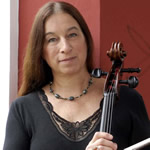 I play a lot of new music, more often chamber music, though I’m also a long-time member of American Composers Orchestra. Recently, I performed as the cellist for the premiere of John Fitz Rogers’ new 33-minute string quartet at the Chamber Music Conference in Bennington, Vermont. It’s exciting to blaze new territory, to create a context for the composer to hear her or his work for the first time, to bring to the audience a vital piece of brand new music. The response was a well-deserved standing ovation, for the composer and for the performance.
I play a lot of new music, more often chamber music, though I’m also a long-time member of American Composers Orchestra. Recently, I performed as the cellist for the premiere of John Fitz Rogers’ new 33-minute string quartet at the Chamber Music Conference in Bennington, Vermont. It’s exciting to blaze new territory, to create a context for the composer to hear her or his work for the first time, to bring to the audience a vital piece of brand new music. The response was a well-deserved standing ovation, for the composer and for the performance.
The occasional negative side? There are sometimes problems with notation, unclear expressions for special effects or unreasonable computer-generated tempi. And there’s often not enough rehearsal time set aside for really exploring the uncharted territory.
The interface between composers and deadlines sometimes comes into play during rehearsals. I remember on the day of the concert dress rehearsing an as-yet-unfinished piece in Weill Hall, and the composer came racing down the center aisle, waving the last pages of his piece. We premiered it that night.
I enjoy the technical challenges when approaching new music, and I cherish the interaction with the composers and also getting to know their own personal styles. As performers, we are responsible for imparting our enthusiasm and conviction to the audiences of today, so the new music we play can enter the mainstream for future audiences.
–Maxine Neuman
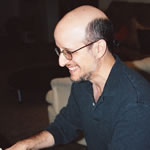 What’s interesting about composing “contemporary classical” music – as opposed to musical theater or pop music – is that there are no rules. There are no expectations. Ever since John Cage, any sound that can be heard can be used as part of a piece of music. That said, each piece needs to have its own rules; it’s rather like writing a mystery novel. Each piece has to be internally self-consistent, or it won’t be satisfying. Essentially, writing each piece is like creating a new world.
What’s interesting about composing “contemporary classical” music – as opposed to musical theater or pop music – is that there are no rules. There are no expectations. Ever since John Cage, any sound that can be heard can be used as part of a piece of music. That said, each piece needs to have its own rules; it’s rather like writing a mystery novel. Each piece has to be internally self-consistent, or it won’t be satisfying. Essentially, writing each piece is like creating a new world.
I am a contemporary tonalist composer; most of my music has bar lines, and some of it even has key signatures. What’s more, in an era when music to most people is something that comes out of a speaker, I have chosen to concentrate on music that is produced acoustically. So, artistically speaking, not much has changed for me as far as technology. Of course, the fact that I live in the same environment as electronic music has influenced what I write. And here’s something that composers all throughout history would have given their eyeteeth to be able to do: send out their parts as PDF files by e-mail!
Some 21st century music is incredibly offputting to all except a select few; some of it is just as crowdpleasing as a Beethoven symphony. I personally try to aim my music for a sweet spot where a general “classical” music audience would enjoy the piece, and yet a “new music” audience would find it interesting as well. Reactions to my music have generally been favorable, both by audiences and by individuals who have approached me. Perhaps oddly, I enjoy listening to music far less “traditional” than the music I myself write.
When I am able to visit an ensemble that is rehearsing my music, those experiences have been some of the high points of my life. What’s especially cool is when the performers have ideas I didn’t think of.
I’m incredibly grateful to all of the performers who have worked so hard to make performances of my music come alive. It’s not the little black dots that are the music; it’s the sounds you make.
–David Wolfson
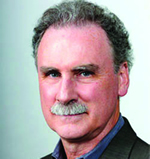 I’ve always enjoyed the challenges of performing and conducting contemporary repertoire. For me, an important part of our obligations as artists is to promote and foster the music that gives voice to our time. Ever since my student days, I’ve been fortunate to have been able to establish performer-composer relationships with fascinating artists such as Luciano Berio, Hall Overton, Jacob Druckman, Elliott Carter, Mario Davidovsky, George Crumb, Gyorgy Ligeti and many more, including very strong younger composers over the years. These relationships are essential to the propagation of our art. One cannot imagine Haydn without his Esterhazy orchestra, Beethoven without Clement, Brahms without Joachim, Schoenberg without the Kolisch Quartet or Berg without Krasner.
I’ve always enjoyed the challenges of performing and conducting contemporary repertoire. For me, an important part of our obligations as artists is to promote and foster the music that gives voice to our time. Ever since my student days, I’ve been fortunate to have been able to establish performer-composer relationships with fascinating artists such as Luciano Berio, Hall Overton, Jacob Druckman, Elliott Carter, Mario Davidovsky, George Crumb, Gyorgy Ligeti and many more, including very strong younger composers over the years. These relationships are essential to the propagation of our art. One cannot imagine Haydn without his Esterhazy orchestra, Beethoven without Clement, Brahms without Joachim, Schoenberg without the Kolisch Quartet or Berg without Krasner.
I believe the music of our contemporaries challenges both our technical and intellectual capabilities and helps us grow as musicians by adding new dimensions to our expressive palate. Audiences can become more receptive by listening with imagination and without pre-conception, much like the way one would approach a new painting on a museum wall.
–Donald Palma
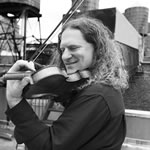 My favorite part of playing new music is working with composers, not just in rehearsals but before the piece is written so I can show them how a violin works and they can give me insight into how a composer thinks. Speaking strictly about atonal music and music with more complex rhythms, I love the process of finding melody and expressiveness in music that at first seems to not have either. The composer is trying to write something good to listen to, so if he or she hears it as music then the performer has to not just learn the pitches and rhythms but find the music in it. New music performances need to aspire to the same standard as standard repertoire. You wouldn’t be satisfied with a performance of Mozart where almost all of it was together and you even got most of the dynamics but for new music that is all too frequently good enough.
My favorite part of playing new music is working with composers, not just in rehearsals but before the piece is written so I can show them how a violin works and they can give me insight into how a composer thinks. Speaking strictly about atonal music and music with more complex rhythms, I love the process of finding melody and expressiveness in music that at first seems to not have either. The composer is trying to write something good to listen to, so if he or she hears it as music then the performer has to not just learn the pitches and rhythms but find the music in it. New music performances need to aspire to the same standard as standard repertoire. You wouldn’t be satisfied with a performance of Mozart where almost all of it was together and you even got most of the dynamics but for new music that is all too frequently good enough.
The composers that have stood the test of time are the ones who advanced the form, not the ones that imitated the past and played it safe. The late Beethoven quartets were considered to be the ravings of a mad man until 60 years after his death. The last three Mozart symphonies were the same. The New Romanticism wave that struck in the mid 1980s tried to pass off 4/4 in three sharps as new music. History tells us that none of that drivel will stand the test of time. I think performing that “music” is a waste of time.
Additionally, there is now a major problem of composers not consulting players before they write for their instruments. The result is music that cannot be played well and that alienates players.
There are also more and more composers who simply can’t spell (meaning choosing the right enharmonic note). In short, if you’re writing a perfect fifth, don’t spell it Gb and C#. If you’re writing a scale, don’t spell it Bb, B#, Ebb. You think I’m kidding, but I recently had to play a passage with B# and Cb repeatedly in the same measure and had to needlessly twist my brain around the useless fact that B was higher than C. I don’t care how cool you think your harmony is. That’s counter-productive.
In short, there are too many composition teachers who need lessons themselves. If you want to learn how to write harmonics for strings, just look at 19th century music. If you are writing music that can’t be expressed in standard notation then come up with your own, but if you are writing something that can be expressed with standard notation then don’t flatter yourself by doing something different.
New music requires a familiarity with compound meters, fractional rhythms, unpredictable intervals, complex and quickly changing ensemble issues and an ability to find melody and phrasing in music where it is not immediately apparent. I expect the first players to read the late Beethoven quartets felt the same way. These are all skills that increase your ability to play older music well.
When Reagan essentially defunded the NEA and ended arts education in schools on the now discredited belief that the private sector would pick up the slack, the result was that programming became much more conservative. Instead of being able to present new music to audiences that might not get it initially but will eventually get it – the way 19th century audiences eventually got the late Beethoven quartets and the last three Mozart symphonies – they were stuck with resorting to lowest common denominator appeals to help fundraising. The result is that too many audience members still think of Stravinsky, Bartok and Schoenberg as contemporary music. How can they ever get Elliot Carter when they barely tolerate Bartok?
–Gregor Kitzis
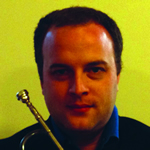 The most interesting and challenging trumpet repertoire comes from the 20th and 21st centuries, and it’s also redefined what trumpet music is. A great example is “split tones” – producing two notes at the same time – which historically has been derided as “double buzz.” Now it is a desired special effect.
The most interesting and challenging trumpet repertoire comes from the 20th and 21st centuries, and it’s also redefined what trumpet music is. A great example is “split tones” – producing two notes at the same time – which historically has been derided as “double buzz.” Now it is a desired special effect.
Good contemporary music speaks as directly to the audience as any music does. If you are doing your job as a performer, you’ve made the composer’s intention clear and gotten the audience excited about the music. After a good performance, members of the audience will invariably approach me to ask about the score. Their questions usually focus on how certain techniques are notated, and their excitement is palpable.
When composers are able to rehearse their own music with us, it is an invaluable help to performers. Composers aren’t always their own best advocates, but no one can really clarify the intent behind a score like the composer can.
Most composers are dying to get a good performance of their music. One of the greatest things you can do with your skill set is to provide composers with a competent performance of their music. You may never hear from a composer again and the score may amount to nothing, but the encouragement that you provide with a skillful rendition is absolutely invaluable to that composer.
–Joe Drew
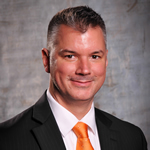 The best thing I like about contemporary music is the opportunity to have a dialogue with the creator of the piece. How does this piece engage with or respond to the world today? What was the inspiration? With composers of the past we rely on speculation and historic record; only with a living composer can this two-way dialogue between artist and performer/audience happen.
The best thing I like about contemporary music is the opportunity to have a dialogue with the creator of the piece. How does this piece engage with or respond to the world today? What was the inspiration? With composers of the past we rely on speculation and historic record; only with a living composer can this two-way dialogue between artist and performer/audience happen.
Unfortunately, modern repertoire can be under-rehearsed, carelessly programmed, and not marketed appropriately. Worse, it is not programmed at all. It is hard to imagine the board of a museum, dance company, or theatre company saying, “Our patrons don’t like contemporary art, so we don’t include it.” But you can find season brochures from small orchestras around the country which don’t feature any commissions or contemporary music. It’s not only an issue of when the piece was composed. “Rite of Spring” is still considered risky and radical programming to many boards and audiences, and that piece is 100 years old.
From a technical viewpoint, I think some composers stretch the limits of what instruments and players are capable of, to achieve a certain effect. For classically trained players who focus on honing their sound and perfecting technique, it can be frustrating and jarring – it’s like asking an opera singer to scream. Some players feel this harms their technique – and it can. You have to find the right way to achieve the effect a composer asks for, without doing damage. But this is not part of our training.
Finally, let me say something about audience reaction to new music. In the 20th century, there was a rather childish and arrogant movement to sort of ignore the audience on the part of some very modernist composers. But a lot of current composers really pay attention to how audiences respond and how they engage. They understand that their pieces have to “work,” just like the work of a playwright and choreographer does. If a joke in a play doesn’t get laughs, it gets cut – the writer doesn’t say “the audience is too ignorant to understand my brilliance.” This is what I think the best new composers have come to understand: the audience’s experience of their work matters.
–Michael Manley
 As an orchestrator, copier, arranger and music editor, I enjoy watching new musical ideas come to life when I work on contemporary repertoire. I like to see a reflection of our political and social times in the music of our decade. The hardest thing is revisions. Living composers do a lot of that! Making sure that that composers’ wishes are honored is the biggest challenge. Sometimes notation stands in their way, and what they write is not really what they mean. I think good music and bad music cross all time periods. There is plenty of both in the 21st century. Often one piece per concert really stands out above the rest, and the audience applause tells it all. Personally, I’d like to hear composers’ comments before the work is played, so I have a better handle of what to listen for. The more excited and inspired they are, the better. The most thrilling concert I remember going to recently was at Juilliard. Student composers’ works were performed, and Reynaldo Moya stands out in my mind with his solo piano piece. His layering of textures seemed to create new musical gestures.
As an orchestrator, copier, arranger and music editor, I enjoy watching new musical ideas come to life when I work on contemporary repertoire. I like to see a reflection of our political and social times in the music of our decade. The hardest thing is revisions. Living composers do a lot of that! Making sure that that composers’ wishes are honored is the biggest challenge. Sometimes notation stands in their way, and what they write is not really what they mean. I think good music and bad music cross all time periods. There is plenty of both in the 21st century. Often one piece per concert really stands out above the rest, and the audience applause tells it all. Personally, I’d like to hear composers’ comments before the work is played, so I have a better handle of what to listen for. The more excited and inspired they are, the better. The most thrilling concert I remember going to recently was at Juilliard. Student composers’ works were performed, and Reynaldo Moya stands out in my mind with his solo piano piece. His layering of textures seemed to create new musical gestures.
–Randa Kirshbaum
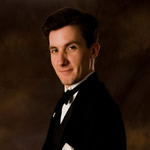 I enjoy performing music that no one has heard or played before. Most of a musician’s life is akin to a modern scientist re-creating the famous experiments of Marie Curie and Stanley Milgram, a vacuum of creativity relegated to reproduction. A gracious composer has offered to write a violin concerto for me, to be premiered with an orchestra in 2015, and the thought of treading completely new territory is terrific! However, I dislike the lack of consistency in the quality of new music, one of the risks you incur with untried repertoire. With classic repertoire you will already have the mediocre work filtered out so that only the best music is programmed. I find 21st century music to be a much more enjoyable listening experience than that of the late 20th. We have finally passed the “blips and blaps” era and found a way to present new music that speaks emotionally to us. Although living composers are a great advantage to artists, I have usually found disappointment in having a composer present at rehearsal. I expect a litany of performance notes and deep insight into their thoughts on the execution of the piece, but the reality is that they address the orchestra very little, perhaps deferring to the conductor and speaking in hushed tones with him outside of rehearsal. Composers may spend too much time alone in a room writing their music, and don’t bring their game to rehearsal! One interesting story: I was performing in an orchestra two or three seasons ago with a piece programmed by a well-known composer. Though not a premiere, the work was only a few years old, and none of the musicians or audience had heard it. In introducing the work to us at rehearsal, the conductor admitted that recent publicity had revealed the work to be music plagiarized from a colleague of the composer!
I enjoy performing music that no one has heard or played before. Most of a musician’s life is akin to a modern scientist re-creating the famous experiments of Marie Curie and Stanley Milgram, a vacuum of creativity relegated to reproduction. A gracious composer has offered to write a violin concerto for me, to be premiered with an orchestra in 2015, and the thought of treading completely new territory is terrific! However, I dislike the lack of consistency in the quality of new music, one of the risks you incur with untried repertoire. With classic repertoire you will already have the mediocre work filtered out so that only the best music is programmed. I find 21st century music to be a much more enjoyable listening experience than that of the late 20th. We have finally passed the “blips and blaps” era and found a way to present new music that speaks emotionally to us. Although living composers are a great advantage to artists, I have usually found disappointment in having a composer present at rehearsal. I expect a litany of performance notes and deep insight into their thoughts on the execution of the piece, but the reality is that they address the orchestra very little, perhaps deferring to the conductor and speaking in hushed tones with him outside of rehearsal. Composers may spend too much time alone in a room writing their music, and don’t bring their game to rehearsal! One interesting story: I was performing in an orchestra two or three seasons ago with a piece programmed by a well-known composer. Though not a premiere, the work was only a few years old, and none of the musicians or audience had heard it. In introducing the work to us at rehearsal, the conductor admitted that recent publicity had revealed the work to be music plagiarized from a colleague of the composer!
–Todd Sullivan
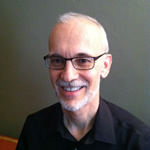 What I like most about performing current repertoire is the excitement of performing music for the first time and music that is most likely new to the audience. As an organist and harpsichordist, I spend most of my career performing early music. Playing new scores is a great foil to doing that. What I like least is the inadequate rehearsal situations. As far as technique, the greatest challenges of performing new music are the rhythm and color, and grasping the structure. Audience response varies widely to contemporary music. The more “approachable” pieces usually get a favorable response. The more unusual ones sometimes don’t communicate to all audience members. But that’s true of music in all styles. When the composer comes to one of our rehearsals, it’s very helpful. Notation, no matter how specific, can convey everything a composer has in mind. And if the composer isn’t familiar with the instrument I’m playing (organ and harpsichord are hardly “mainstream”), then trying to create the composer’s ideal may take compromises on both sides of the composer/performer divide.
What I like most about performing current repertoire is the excitement of performing music for the first time and music that is most likely new to the audience. As an organist and harpsichordist, I spend most of my career performing early music. Playing new scores is a great foil to doing that. What I like least is the inadequate rehearsal situations. As far as technique, the greatest challenges of performing new music are the rhythm and color, and grasping the structure. Audience response varies widely to contemporary music. The more “approachable” pieces usually get a favorable response. The more unusual ones sometimes don’t communicate to all audience members. But that’s true of music in all styles. When the composer comes to one of our rehearsals, it’s very helpful. Notation, no matter how specific, can convey everything a composer has in mind. And if the composer isn’t familiar with the instrument I’m playing (organ and harpsichord are hardly “mainstream”), then trying to create the composer’s ideal may take compromises on both sides of the composer/performer divide.
–Stephen Rapp
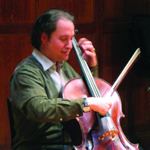 When I was in my late teens, I attended a classical concert with friends of my parents. One was a tailor named Jerry. The ensemble played a piece with very atonal harmonies. Jerry asked me what I thought of it and I said it was interesting. He said, “You see, I can’t relate to this kind of music. It does nothing for me. Sure, you go to Manhattan School of Music where they explain all this stuff to you. But to the average person like me, this is a waste of time.” The funny thing is he liked Mozart and Beethoven. This was a guy who went to classical concerts! But I realized, even back then, that the classical world was losing its audience. I vowed that I would make music that would reach out to everyone, but those who didn’t care about the Jerrys of this world lived to see the crumbling of the once great classical music scene.
When I was in my late teens, I attended a classical concert with friends of my parents. One was a tailor named Jerry. The ensemble played a piece with very atonal harmonies. Jerry asked me what I thought of it and I said it was interesting. He said, “You see, I can’t relate to this kind of music. It does nothing for me. Sure, you go to Manhattan School of Music where they explain all this stuff to you. But to the average person like me, this is a waste of time.” The funny thing is he liked Mozart and Beethoven. This was a guy who went to classical concerts! But I realized, even back then, that the classical world was losing its audience. I vowed that I would make music that would reach out to everyone, but those who didn’t care about the Jerrys of this world lived to see the crumbling of the once great classical music scene.
While in college we had a visiting modern music expert do a residency. He conducted us in a performance of “Threnody for the Victims of Hiroshima.” I asked him how he thought Penderecki came up with the name. He said, “Who knows? He probably came up with it after he wrote it.” He also told a story about when Schoenberg went to hear a rehearsal of one of his pieces. After listening to it he told the orchestra he had no idea it would sound like that. I think our expert thought we would find these stories amusing but what it said to me was that even the composers didn’t understand what they were writing! Of course there are some great works that are very dissonant, but most audiences can’t tell the difference. This is why classical music has become more tonal again. There are so many interesting things one can do with a piece of music while still keeping it accessible.
–Aaron Minsky (Von Cello)
